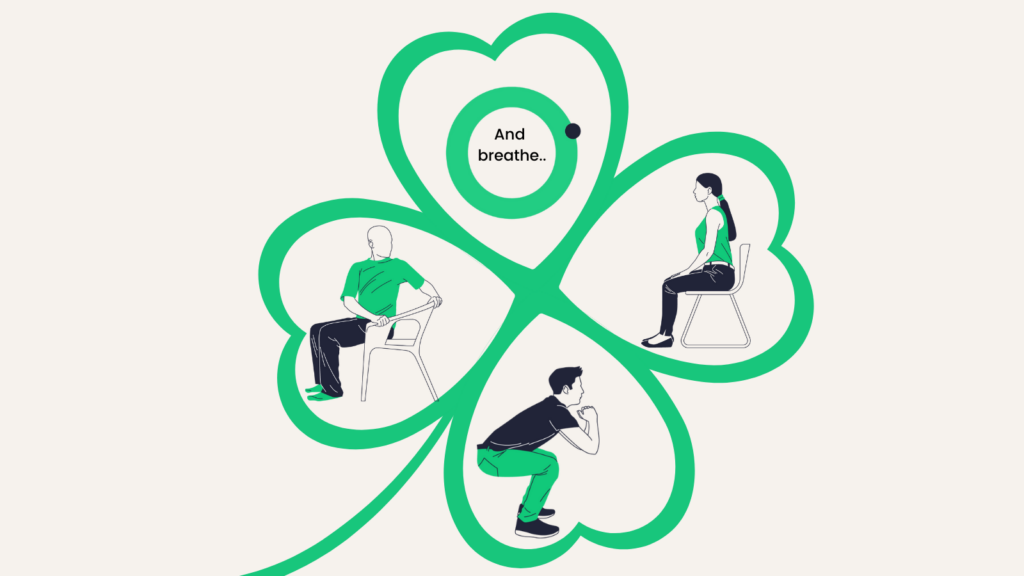Many of us have experienced some form of back, neck or shoulder discomfort as a result of too much sitting. This can range from mild niggles to debilitating pain which can result in absence from work.
In this blog we look at the components of back care for desk workers and how simple practices can easily be integrated into the working day to reduce the risk of serious problems developing.
Boost your desk workers wellbeing and performance with these 5 strategies:
Table of Contents
While working in a desk-based role it’s all too easy to get absorbed in our tasks and to ignore physical discomfort building up, but our health and well-being should always be our main priority. A small amount of time spent in preventing or reducing aches, pains or niggles can pay huge dividends in maintaining our best levels of mental focus, creativity and productivity.
1. Posture awareness and ergonomics
Taking first things first, if you are working at a desk, it is clearly important to get the set up of your workstation optimised and to ensure that when you are sitting or standing at the desk that you can maintain good posture. By this we mean that as far as possible, you should keep your back straight, your chin parallel with the floor, shoulders relaxed, and wrists in a neutral position while typing. Consider arranging an ergonomic assessment to ensure your workspace is set up optimally for your specific needs.
Ergonomic Seating: An ergonomically designed chair and desk setup will ensure that your chair provides proper lumbar support and allows your feet to rest flat on the floor or on a footrest and that your desk is at a comfortable height for typing and viewing your monitor.
Ergonomic Accessories: You may also need to use ergonomic accessories like keyboard trays, monitor arms, and laptop stands to customize your workspace to your specific requirements. A hands-free headset for phone calls may also be of benefit to allow you to move around more while talking or to sit or stand in a comfortable position for typing.
Change position: If you have access to a sit-stand desk or a desk converter that allows you to switch between sitting and standing, changing position regularly will engage the muscles and prevent the body from “setting” into one shape. Whether sitting or standing, fidgeting at the desk is helpful to keep the muscles awake and the joints mobilised – neck, shoulder and wrist rolls, gentle twists and seated cat cows will all help, as will swaying or bouncing gently along to your favourite tracks if you’re able to have music on. Occasionally sitting on an exercise ball or a kneeling chair can also engage different muscle groups and promote better posture. Even sitting on the floor with proper support may be worth trying. The key is to strike a balance between sitting in an ergonomically optimal position and changing positions regularly. However good your main workstation set up is, your body is likely to suffer from sitting in a fixed position for too long. Remember that everyone’s needs are different, so it’s important to experiment and to find out what works best for you.
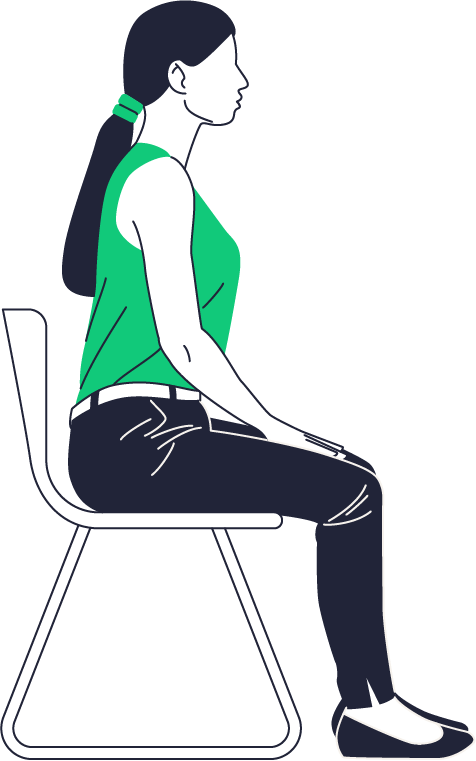
2. Movement breaks
During days at the desk, ideally we should take a short break every 20 to 30 minutes to stand up, stretch, and move around. This will help to prevent musculo-skeletal issues from building up and to reduce any that are already troublesome.
If taking breaks this frequently feels impossible (for example if you’re booked into hour-long meetings most of the day), try at least to build five to 10 minutes breathing space between tasks or appointments to give an opportunity for some movement or stretching while regrouping mentally. Also think about ways to build additional movement into natural breaks, for instance going to speak to a colleague, transferring from one working space to another, going to get a drink etc – can you walk the long way round, or go to a water cooler further away? Can you do a few stretches before settling back to work?
Try to incorporate walking into your working day whenever possible – consider walking meetings, walking while on the phone and/or taking a walk during your lunch break. If you have to stand in one place for a while, try shifting your weight from one foot to the other, or alternating between a gentle bend in both knees and rising up onto tiptoes every few minutes.
If you can also incorporate stretching and strengthening exercises into your daily routine your body will thank you! The available research provides plenty of support for the benefits of active microbreaks for the cognitive performance and mental health as well as the physical wellbeing of sedentary workers. Even a minute here and there can really make a difference
Try our At desk back care sequence for simple stretches that can be integrated into your day at the desk, our Antidote to sitting sequence to counter the effects of prolonged sitting or our Daily dozen recommendations for general mobilisation, stretching and strengthening of the body.
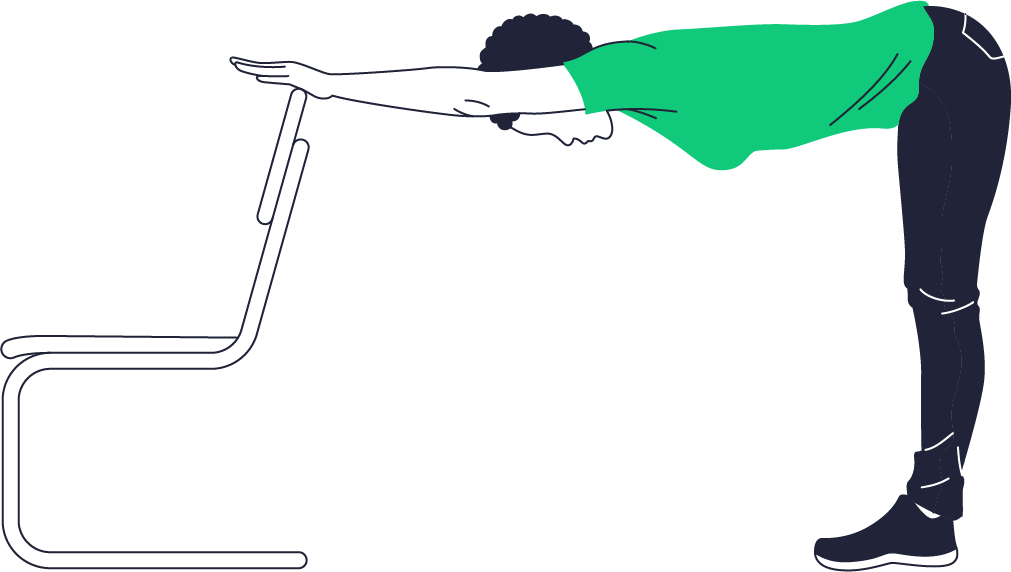
3. Care for your core
If you sit in a slumped position for any length of time, the core support muscles of the body can become weakened. Core stability is needed to maintain a good posture and to promote good spinal health, reducing the risk of back pain and making it easier to perform daily tasks, especially those that involve reaching, lifting, or twisting.
Engaging your core muscles while sitting is a helpful practice for improving core stability and providing support to your lower back. Try this:
How to engage core muscles while sitting:
Sit tall: Start by sitting up straight in your chair with your feet flat on the floor. Ensure that your hips are pushed back into the chair, and your spine is in a neutral, upright position.
Breathe deeply: Take a deep breath in through your nose, allowing your diaphragm to expand. As you exhale through your mouth, gently draw your navel toward your spine. Imagine that you’re cinching your waistline and narrowing your midsection.
Maintain a gentle contraction: You don’t need to clench your core muscles tightly. Instead, maintain a gentle contraction in your abdominal muscles. You should feel a subtle engagement in your deep core muscles without holding your breath.
Avoid arching or slouching: Be mindful of any tendency to arch your lower back or slouch forward. Engaging your core helps stabilize your pelvis and maintain a natural curve in your spine.
Remember that maintaining core engagement can be done throughout the day, whatever your activities. Regularly remind yourself to engage your core, whether you’re sitting, standing, walking, lifting objects or trying an active yoga pose. Over time, this practice will become second nature, leading to better core strength, posture, and overall well-being.
Adding in some yoga poses and movements that require core engagement and help to build core strength will build on your core engagement focus. Try our Core care sequence for some ideas.
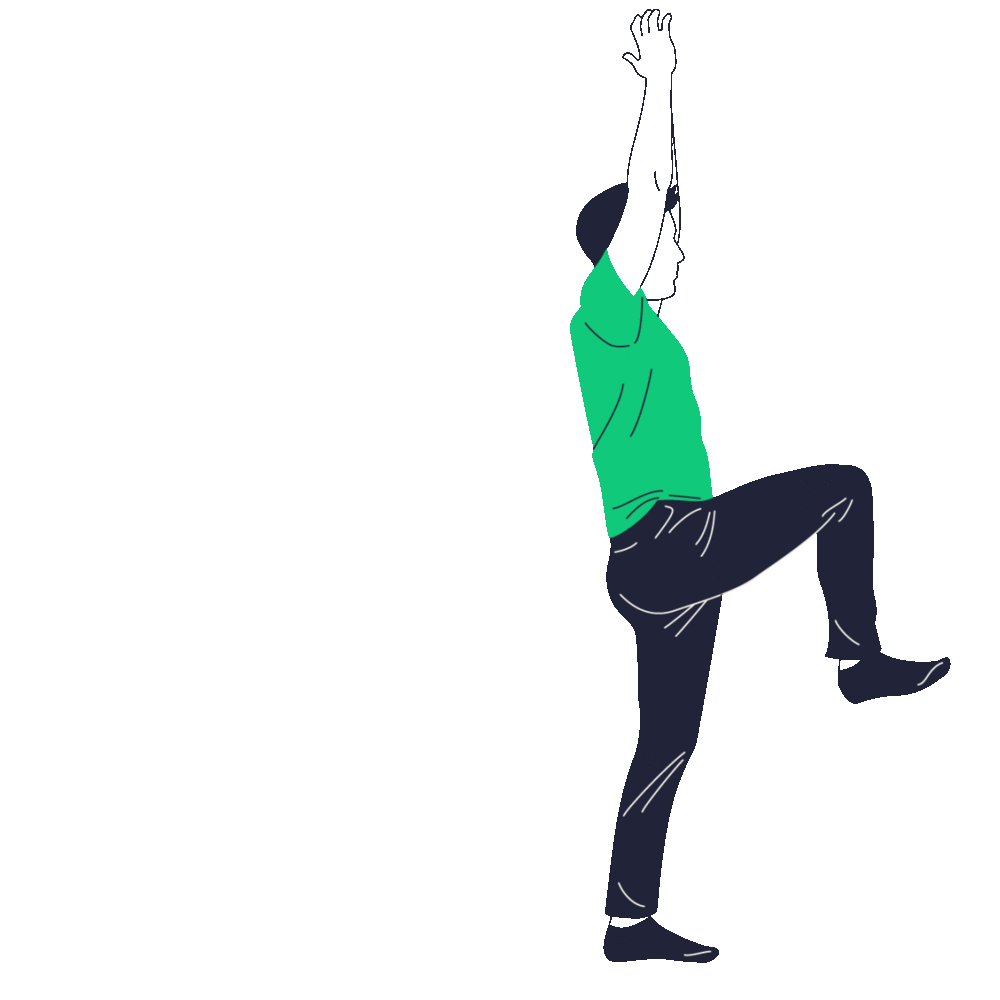
4. Stress management
Stress often transfers from the mind to the body, especially showing up as tension in the muscles of the upper back, neck and shoulders. Movement is a natural stress reliever, triggering the release of endorphins that promote a positive mood. Mindful, focussed breathing is also a powerful practice to reduce stress.
Breathwork
Deep breathing, also known as abdominal breathing, can significantly reduce muscle tension, slow the heart rate and promote relaxation and mental clarity.
Try this: Sit up straight. Place one hand on your chest and the other on your abdomen. Inhale slowly and deeply through your nose. Your abdomen should expand and your ribs move out to the sides. Exhale slowly through your mouth or nose and feel your abdomen and ribs gently contract.
You might like to try one of the breath practices in our Practice library to help to regulate your breathing – for example Calming breath. Or try them all in turn and observe whether they produce different results for you.
One minute of focussed breathing will help you to calm down during moments of stress. If you have more time, then building up to a regular practice of 5-10 minutes each day will start to produce lasting improvements in your physical and mental wellbeing.
For a combination of breathwork and stretching, try our At desk de-stress sequence.
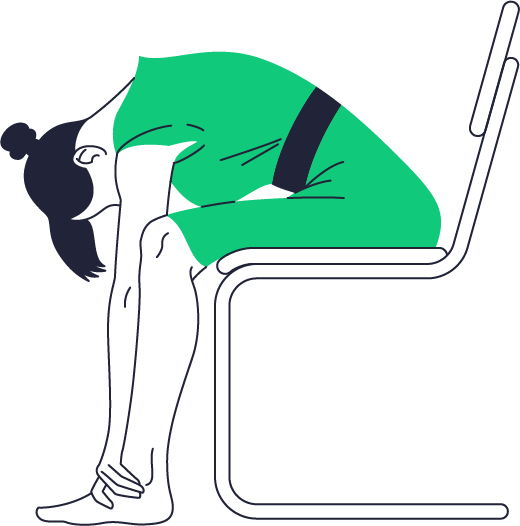
5. Hydration
Hydration is of course important for overall health, including the health of the spinal discs and musculoskeletal system, which depend heavily on adequate hydration to function optimally and maintain their integrity.
Hydration helps the spinal discs to maintain their structural integrity and pliability, allowing them to act as effective shock absorbers, withstanding the impact of daily activities.
Proper hydration is also essential for maintaining lubrication of the joints and for effective functioning of the muscles, ligaments and tendons.
During a day at the desk it is all to easy to forget to drink water, or to assume that you don’t need much water as you’re not moving, but in the context of looking after your back, and looking after your wellbeing in general, it is well worth making a conscious effort to stay well-hydrated. The general guideline is to drink around 2 litres of water daily, and you might like to consider a water bottle with time markers showing target volumes through the day. Another approach though could be to have multiple smaller drinks of water and to use refilling your glass as a mini movement break. Incorporating hydrating fruits and vegetables like watermelon, cucumber, and oranges into your diet during the working day will also help you to remain hydrated as well as giving you a nutritional boost.

Helen Withers, Director, YoPO Wellbeing Limited
If you would like any further information on this update or to request access to YoPO’s resource bank of accessible ideas for active microbreaks, please contact hello@yoponow.com.
References
- Ahmed Radwan, Luke Barnes, Renee DeResh, Christian Englund & Sara Gribanoff | Simone Borsci (Reviewing editor) (2022) Effects of active microbreaks on the physical and mental well-being of office workers: A systematic review, Cogent Engineering, 9:1 DOI: 10.1080/23311916.2022.2026206
- Lumbar Disc Changes Associated with Prolonged Sitting – PMC (nih.gov) Gregory G. Billy, MD, Susan K. Lemieux, PhD, and Mosuk X. Chow, PhD

